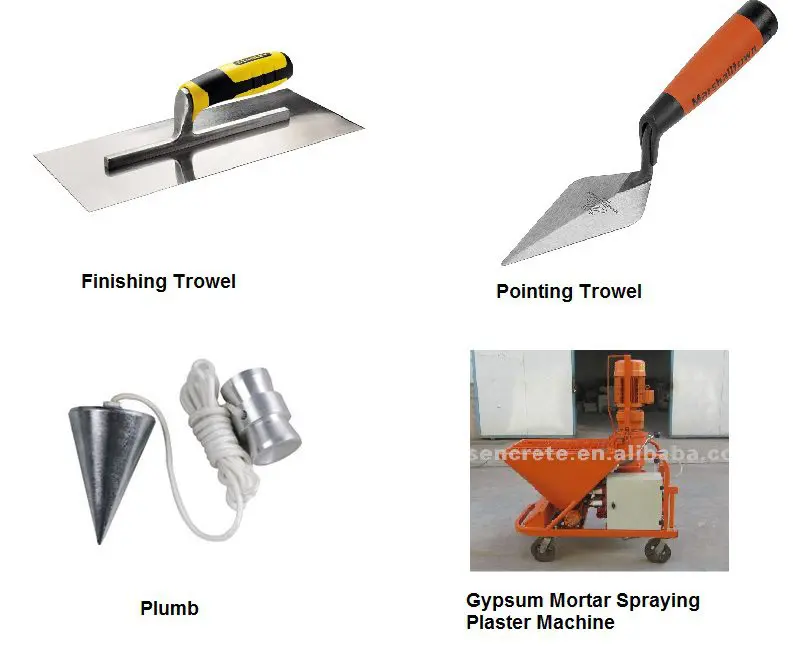Gypsum plaster is most commonly used in Internal wall plastering and has been widely replacing the traditional cement mortar plastering.
Although gypsum plaster is easy to apply and requires less experienced manpower as compared to the traditional cement mortar, it is important to properly prepare the wall surface and properly apply gypsum plaster to ensure no cracks, peel offs etc.,
In this article, we discuss in detail the procedure to apply gypsum plaster on wall properly.
technical Specification of Gypsum Plaster
Colour of Finished surface: White
Setting Time: 25-30 Minutes
Coverage area (considering 12mm thickness): 21 sq.ft per 25 Kgs Bag
Compressive Strength: 60-70 kg/cm2
Shelf Life : 4 Months
Package Size: Bag size of 25 Kgs
Step By Step Procedure for Internal Gypsum Plastering on Walls
Step-1: Surface Preparation and Ground Work
Before applying gypsum plaster, the surface of the wall needs to be prepared properly. Without preparation,
- The beam and brickwork joints should be filled with the non-shrink mortar a day before the application of Chicken mesh.
- Chicken mesh should be fixed tightly at the joint of brickwork and RCC. Also ensure the overlap of at least 100 mm on both sides
- Concrete and brick surfaces have to been properly cured (applying water on surface) before applying gypsum plaster. All Brick work surfaces has to be cured properly for atleast 7 days
- RCC surface has to be checked for any defects like honey combing Dressing has to be done if required before application of plaster material
- All holes and cracks on the surface of the brick wall should be repaired before plastering
- Hack the concrete surface to create better bonding between gypsum plaster and concrete surface. Alternatively, bonding agents (like Bond-it by Saint Gobain) can also be applied.
- Ensure that all the electrical conduits and plumbing lines are placed inside the brick work (If they are concealed).
- Ensure that the RCC surfaces are free from shuttering oil, loose materials or any other agents
- Dissimilar expansion and contraction of RCC and brick / stone masonry could cause stresses and at times separation. To reduce cracks, ensure chicken mesh (usually 20 guage) is installed at brick and RCC interfaces, around door frames, around window frames and opening for electrical & plumbing lines.
- Check the verticality of wall surface using plumb level and remove undulations, if any.
- Clean water on both brick and RCC surfaces should be applied 10 minutes before plaster application to control the suction.
Step-2: Applying Gypsum Plaster on Walls
Gypsum Plasters can be applied directly to brick walls, concrete blocks, or RCC surfaces.
- Gypsum Plasters usually come in ready mix bags. Extract the powder in a dry vessel and mix it with water. The mixture has to be stirred for 2-3 minutes
- Check the thickness of plaster that needs to be applied on the wall. It should not be more than 13 mm
- Apply Gypsum plaster to solid surface with firm pressure.
- As the plaster stiffens, carry out further flattening. When the plaster is sufficiently firm, scour the surface with sponge float & water as required
- Trowel the surface progressively to get smooth matt finish
- Finish surface should be protected from continuous exposure to moisture.
- Prolonged or repeated exposure to moisture may cause a loss of strength and/or adhesion.
- Painting work should be only be started once surface has becomes complete dry.
Recommended Thickness of Gypsum Plaster
- Gypsum Plasters can be applied from 6mm to 20mm in thickness.
- We recommend a minimum thickness of 6 mm gypsum plaster to avoid cracks and debonding
- If more than 20 mm thick of plaster builtup is required for a wall, then we would recommend to first go with a dash coat of cement and sand plaster for a thickness of 8-12 mm and then finish with gypsum plaster for the remaining thickness (which should not be less than 6mm).
Recommended Finish For Gypsum Plaster
- Gypsum Plaster should be finished to a good degree of smoothness before painting. The surface is usually sand papered (not with emery paper) to give it a further smoother finish.
- All horizontal lines and surfaces should be tested with a level.
- All the corners have to be checked if they have been smoothly finished and are in right angle
Top Brands of Gypsum Plaster Available in India
- Gyproc One Coat Elite from Saint Gobain
- MagicPlast from Magicrete
- Diamond Plaster
- Stucko from Shubham Plaster
- JK Gypgold from JK Lakshmi Cement
Tools Required for Gypsum Plaster






